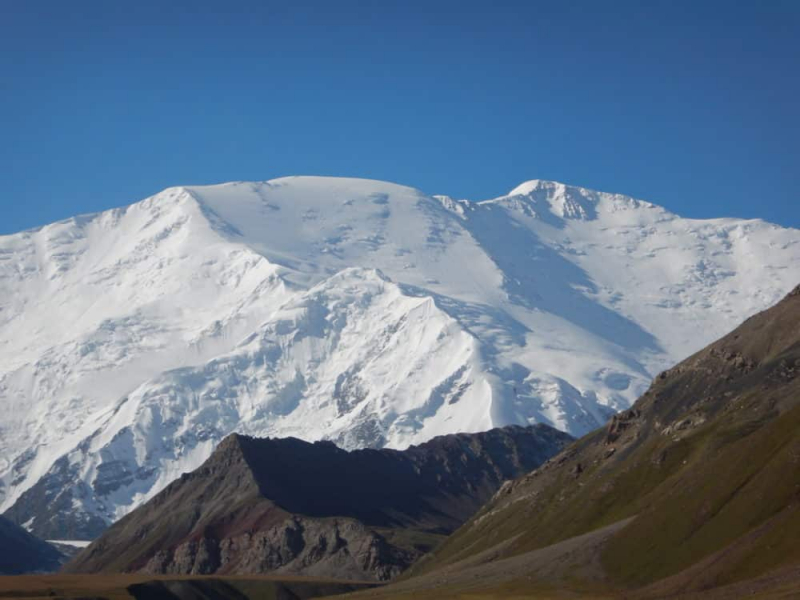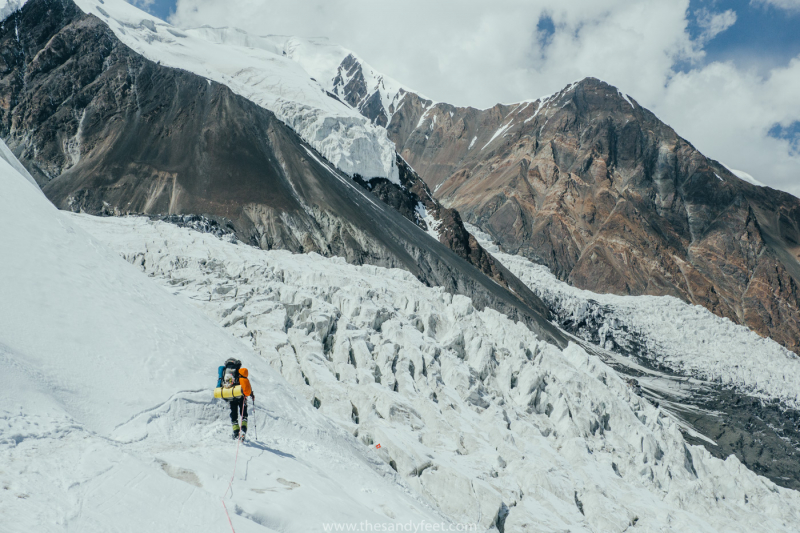Lenin Peak
Lenin Peak, also known as Ibn Sina (Avicenna) Peak, is the second-highest point in both Tajikistan and Kyrgyzstan, rising to 7,134 meters (23,406 feet) on the border of Tajikistan and Kyrgyzstan in Gorno-Badakhshan (GBAO). It is one of the easier 7,000 m summits to climb in the world, and it has by far the most ascents of any 7,000 m or higher peak on the planet, with hundreds of mountaineers reaching the top each year. Lenin Peak is the tallest mountain in Central Asia's Trans-Alay Range, and it is only surpassed by Ismoil Somoni Peak in Tajikistan's Pamir Mountains (7,495 m). It was assumed to be Tajikistan's highest point until 1933, when Ismoil Somoni Peak (then known as Stalin Peak) was climbed and discovered to be more than 300 meters higher. Kongur Tagh (7,649 m) and Muztagh Ata (7,546 m), both in China's Pamirs, are higher than the Tajik summits.
The first exploration of this section of Central Asia took place between 1774 and 1782. The involuntary journey of the slave Filipp Efremov (an ethnic Russian) who escaped from slavery in Bukhara is arguably the first recorded travel through the region. He crossed the Fergana valley, then went to Kashgar through Osh, the Chigirik Pass, and Terekdavan Pass, before crossing the Karakorum. The first European to cross the Alai Mountains was him.
The Trans-Alai (Zaalayskiy) Range and its main peak were found by Alexei Pavlovich Fedchenko in 1871, and scientific excursions to the Alai Mountains began in 1872. Nikolai Leopol'dovich Korzhenevskiy's expedition was arguably the first to come closest to the foot of the eventual Lenin Peak in the early twentieth century.
Location: Kyrgyzstan–Tajikistan border
Elevation: 7,134 m (23,406 ft)








